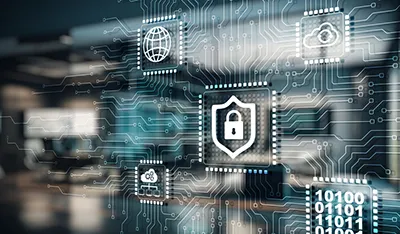How to Integrate Data Destruction Techniques into Your Cyber Security Approach
How to Integrate Data Destruction Techniques into Your Cyber Security Approach
Blog Article
Just How Proper Data Destruction Adds To Robust Computer Safety And Security Providers and Mitigates Risks of Data Violations
In today's digital landscape, the importance of appropriate data devastation can not be overemphasized, as it offers as a basic element of comprehensive computer security services. The effects of inadequate information destruction expand beyond mere conformity; they can exceptionally impact a company's cybersecurity stance and online reputation.
Significance of Information Damage
In today's electronic landscape, the value of data destruction can not be overemphasized. As companies increasingly rely upon electronic possessions, the possible threats connected with information violations and unauthorized gain access to amplify. Reliable information destruction is a crucial element of an extensive info protection strategy, guarding delicate info from coming under the hands of harmful stars.
When data is no longer required, just erasing files or formatting hard disks wants. Residual information can commonly be recouped making use of easily offered devices, posturing substantial risks to both organizations and individuals. This emphasizes the need for robust data damage techniques that make certain all information is irretrievably gotten rid of.
Moreover, regulatory compliance mandates, such as GDPR and HIPAA, highlight the commitment to secure delicate information, including its proper disposal. Non-compliance can lead to severe economic fines and legal repercussions. data destruction. Therefore, integrating efficient information damage methods not only enhances safety yet also fortifies a company's reputation and trustworthiness

Techniques of Secure Information Erasure
Numerous efficient methods of safe information erasure can be utilized to guarantee that sensitive information is permanently removed from storage devices. One extensively recognized strategy is data overwriting, which entails changing existing information with arbitrary patterns multiple times. This method dramatically minimizes the chances of data healing, although it might not work against advanced forensic methods.

Physical damage is likewise a trustworthy technique, where storage space gadgets are provided unusable with shredding, crushing, or incineration. This approach guarantees that data can not be recouped by any type of means yet needs careful handling of hazardous products.
Finally, specialized software application devices developed for secure information erasure supply functionalities that abide by various erasure criteria. These devices often include features like confirmation processes to confirm effective data damage.
Using these methods in mix can improve information protection and minimize the risks connected with information breaches, ensuring that sensitive info is not inadvertently revealed.
Legal and Compliance Factors To Consider
The methods utilized for safe information erasure not just serve to shield sensitive details but likewise has to straighten with lawful and conformity structures governing information protection. Organizations are called for to comply with different regulations, such as the General Information Security Law (GDPR), the Medical Insurance Mobility and Responsibility Act (HIPAA), and the Payment Card Industry Data Safety Requirement (PCI DSS) These laws mandate specific protocols for data taking care of and damage, ensuring that delicate and individual data is irretrievably erased when no more required.
Failing to adhere to these lawful demands can result in substantial penalties, including penalties and reputational damage. Furthermore, companies must preserve records of data damage procedures, demonstrating compliance during audits or examinations. This paperwork not only safeguards versus lawful repercussions yet likewise strengthens trust fund with stakeholders and weblink customers, showcasing a commitment to data safety.
Incorporating lawful and compliance factors to consider right into information damage practices is vital for any type of company. It lessens the threat of data violations and illustrates a positive technique to guarding delicate details, inevitably fostering a culture of protection and accountability across the company.
Effect on Cybersecurity Stance
Efficient information damage dramatically enhances a company's cybersecurity pose by minimizing the potential strike surface for cyber threats. When sensitive data is not properly ruined, it stays available to harmful actors who can manipulate this details for unapproved accessibility, identity theft, or business reconnaissance. By carrying out durable data damage protocols, organizations can effectively reduce the danger of data violations and enhance their total safety and security framework.
Moreover, the safe and secure disposal of unnecessary or out-of-date data not just secures sensitive details however likewise aids companies comply with market laws and standards. Failing to sufficiently damage data can cause serious legal effects and reputational damages, further jeopardizing a company's cybersecurity position.

Inevitably, prioritizing reliable data destruction is essential for cultivating a robust cybersecurity posture, guaranteeing that companies remain attentive against advancing cyber hazards while shielding their crucial assets and stakeholders.
Best Practices for Organizations
Applying ideal methods for information devastation is essential for companies intending to protect delicate information and mitigate cybersecurity threats. Primarily, companies should establish a thorough information devastation policy that outlines duties and treatments. This plan ought to adhere to pertinent regulations, such as GDPR or HIPAA, guaranteeing legal conformity.
Second of all, it is important to utilize approved data sanitization methods, consisting of data cleaning, degaussing, and physical devastation, customized to the type of information and storage medium. Utilizing certified specialists for information devastation solutions improves the dependability of these methods.
Moreover, companies ought to preserve a detailed stock of all information storage space devices, making certain that all obsolete or changed equipment undergoes devastation. Routine audits of data devastation techniques can assist enhance and identify weak points conformity.
Employee training is one more important facet, as personnel should recognize the relevance of data destruction and follow developed protocols. Lastly, companies need to record all data devastation activities to supply responsibility and traceability, which can be important throughout audits or in the occasion of a violation.
Verdict

One extensively identified technique is data overwriting, which involves replacing existing data with random patterns multiple times.The methods used for protected information erasure not only serve to protect delicate details but also needs to straighten with legal and conformity structures governing information protection. These laws mandate certain procedures for information taking care of and devastation, guaranteeing that individual and delicate data is irretrievably gotten rid of when no longer required.
By applying durable information destruction procedures, companies can successfully decrease the threat of data violations and enhance their overall safety and security structure.
In conclusion, correct data destruction is crucial for enhancing computer safety and security services and minimizing the threats linked with information violations. - data destruction
Report this page